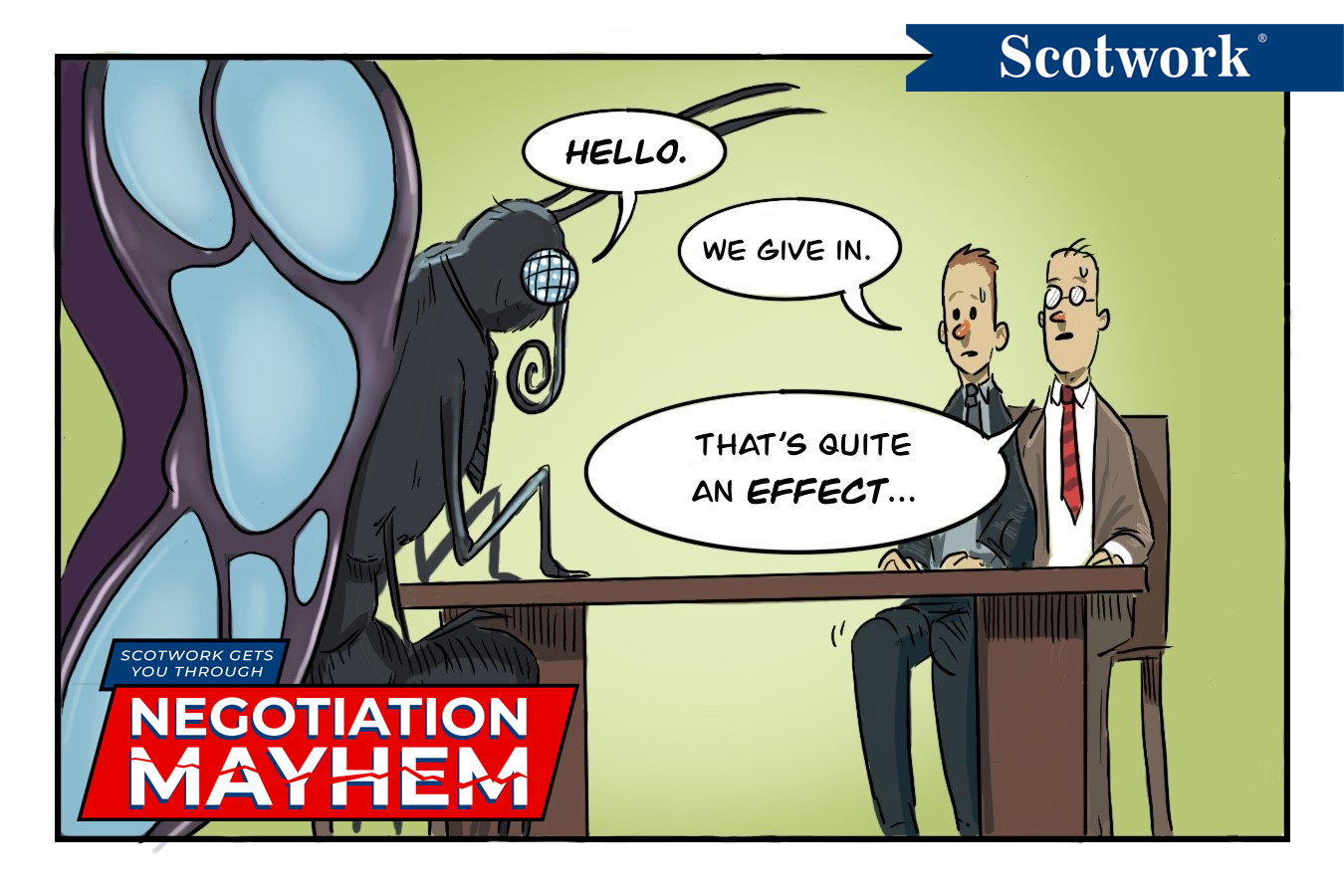This concludes our four-part series on negotiation mayhem, and it seems appropriate that we end on a note about chaos. As I wrote this post, I went down a rabbit hole regarding the butterfly effect. The deeper I went, the clearer it became that there might be more miscellaneous mayhem or chaos at the negotiating table than we tend to appreciate.
The butterfly effect describes how small events can have big, unforeseen consequences. You’ve likely come across the concept: A butterfly flapping its wings in your backyard can have an impact on weather systems, ultimately causing a massive hurricane halfway around the world. That’s one illustration of how a small action in a complex system can have unpredictable — and frequently significant — consequences on future events. This happens a lot in negotiations.
Negotiations are complex systems of conflict resolution. Within them, we’re dealing with not only the obvious issues being discussed, but also other variables: human emotions, hidden agendas, partial information, outside influences, and so many more that aren’t necessarily apparent at the outset. Yet each of these variables can impact the outcome.
At Scotwork, we observe thousands of hours of negotiations a year, and all of our experts can tell you that the slightest variable can have significant consequences. For instance, an opening statement can set up success for all parties — or it can be a missed opportunity to create a desirable outcome. What’s said in those few minutes might make the difference between you getting a deal or walking away.
We’ve also seen how unconscious signals of flexibility can make someone more — or less — willing to share information. Similarly, hesitation or haste when responding to a proposal can lead to gaining or losing value in a counterproposal.
Good negotiators do their best to plan for inevitables, develop multiple strategies, and even map out exactly how they want a negotiation to go. But when it’s time to sit down at the table, even the slightest change to any variable can alter the course of the discussion and make mayhem.
That doesn’t mean we should stop planning and preparing. Quite the contrary: While we can’t predict every outcome, the more we prepare for mayhem, the more competent and composed we’ll be in terms of adapting to it.
I’ll close out the mayhem series where I started. It’s March Madness, and we all know that it’s harder to predict a perfect bracket than it is to win the lottery. Yet I’m sure many of you created a bracket in hopes of achieving perfection. In fact, you probably researched, analyzed, and planned every detail you could imagine when creating that bracket. If you want to minimize mayhem at the negotiating table, do the same with your negotiations — research, analyze, plan.
Before we leave mayhem behind, vote on which Miscellaneous Mayhem issues create problems for you while negotiating. Then join us for our Negotiation Mayhem webinar, when we’ll narrow down our list of 32 different mayhem-causing situations and discuss how to handle them with practical approaches. Everyone who joins the webinar will get to vote on which situations we discuss. Plus, you can help us narrow down the list to the single biggest mayhem-causing culprit at the negotiating table.
Good luck with your negotiation mayhem — and good luck with your brackets!
We Can Help You Minimize Your Negotiation Mayhem.
Regardless of where it’s coming from — your side, the other side, a power imbalance, or anywhere else — mayhem can destroy deals. Rely on Scotwork experts’ nearly 50 years of real-world experience to help you manage negotiation mayhem or avoid it completely.

